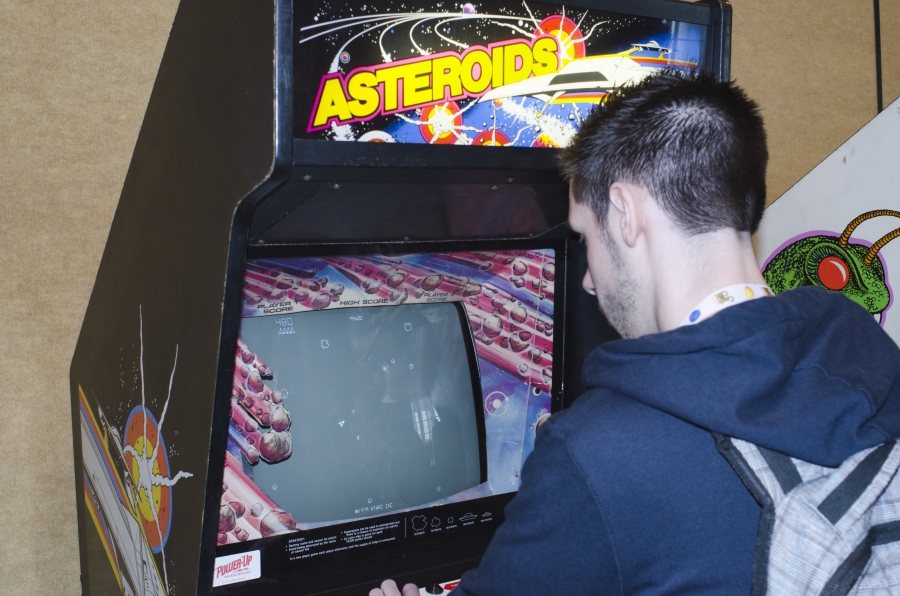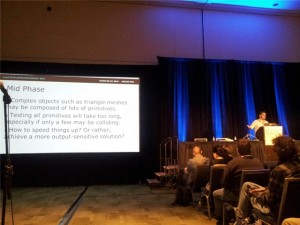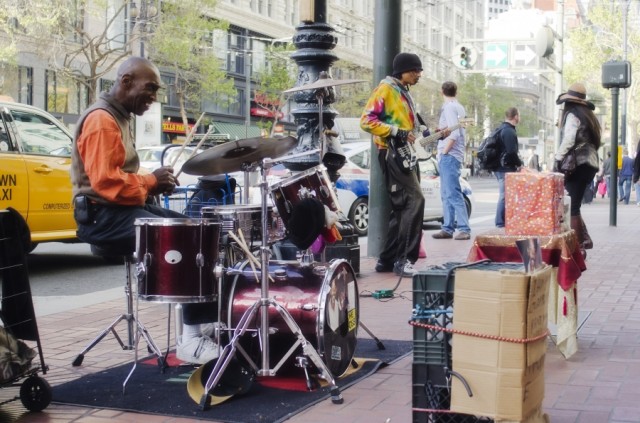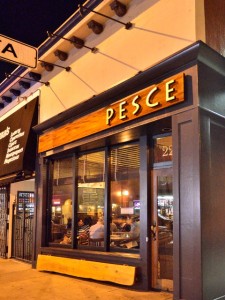So today was interesting. I’m all set to check my bag and fly out to San Francisco and I find out that my flight is overbooked. …great. The ticket agent asks if I would mind moving to another flight. I’m in the process of rejecting by default as I needed to be here by 1700h PDT. Before I get around to doing that and demanding the seat I purchased, he says, “How about a non-stop that leaves 22 minutes later than your flight, but arrives two hours earlier. …blink… Yup! That will work just fine, thank you. As it happens, it was the flight that the Game Development Program Chair, Prof. Russ Hanna was on as well.
The rest of the trip goes great. Flight in was smooth, BART into town was smooth, got my MUNI pass easy-peasy. The problem started when I got to hotel. Paperwork is such a fun thing. Turns out there was a mishandling of the paperwork between the college and the hotel so the new front desk clerk didn’t think that my room was paid. Great. There are worse places than San Francisco to be homeless for a day. Fortunately, the folk at the Hotel Stratford were amazing and very understanding! They knew that this would work itself out in the morning when the business offices opened, and they did.
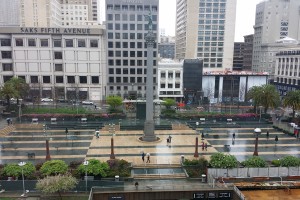 What to do while in the Powell and Market area and your stressed out? Eat! Senior Scientist at Fundamental Technologies, Jerry Manweiler, introduced me to a great burger joint on Union Square, the Burger Bar. Wet, stressed, and hungry, That’s where Russ and I went. It’s an amazing place with an amazing view, although I will say the view during the Christmas season when I come here for the American Geophysical Union Fall Meeting is a bit more colourful.
What to do while in the Powell and Market area and your stressed out? Eat! Senior Scientist at Fundamental Technologies, Jerry Manweiler, introduced me to a great burger joint on Union Square, the Burger Bar. Wet, stressed, and hungry, That’s where Russ and I went. It’s an amazing place with an amazing view, although I will say the view during the Christmas season when I come here for the American Geophysical Union Fall Meeting is a bit more colourful.
One thing that did go right was registration at GDC. It used to be such a madhouse. They’ve really streamlined the process and have it working very smoothly. Russ and I were able to walk right up, sign in, and grab our badges. We were in and out in less than five minutes. Brilliant! That left time for some photography work. Before wrapping up the day with more food at an Irish-themed deli. I’m a sucker for corned beef sandwiches!
I’m part of a small group of photogs that post weekly photos on a theme in an effort to push each of us outside of our normal comfort zones and force us out of our photographic ruts. Last week’s theme was “Motion,” and what I wanted was a bus or streetcar moving through the steam rising from the storm grates. I picked the wrong side of the street. Although I didn’t get the steam in the shot like I wanted, I did get some panning practice in before racing season. The lens I used was a 28-mm prime thrift-store special. Auto nothing! It forced me to think about and set every aspect of the exposure and the focus. It’s not tack sharp, but by this time it was starting to pour down rain, and I wasn’t keen on sticking around to grab another.
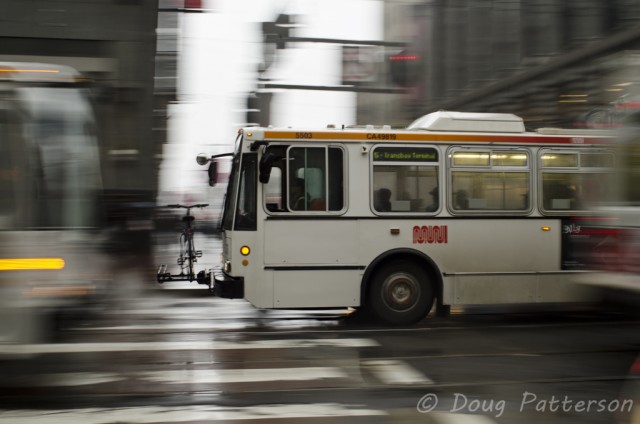
EXIF
Device: Nikon D7000
Lens: Tokina 28mm f/2.8
Focal Length: 28mm
Focus Mode: Manual
AF-Area Mode: Single
Aperture: f/8
Shutter Speed: 1/15s
Exposure Mode: Manual
Exposure Comp.: 0EV
Metering: Matrix
ISO Sensitivity: ISO 100
Tomorrow, the Math for Game Programmers summit begins! All math, all day!



